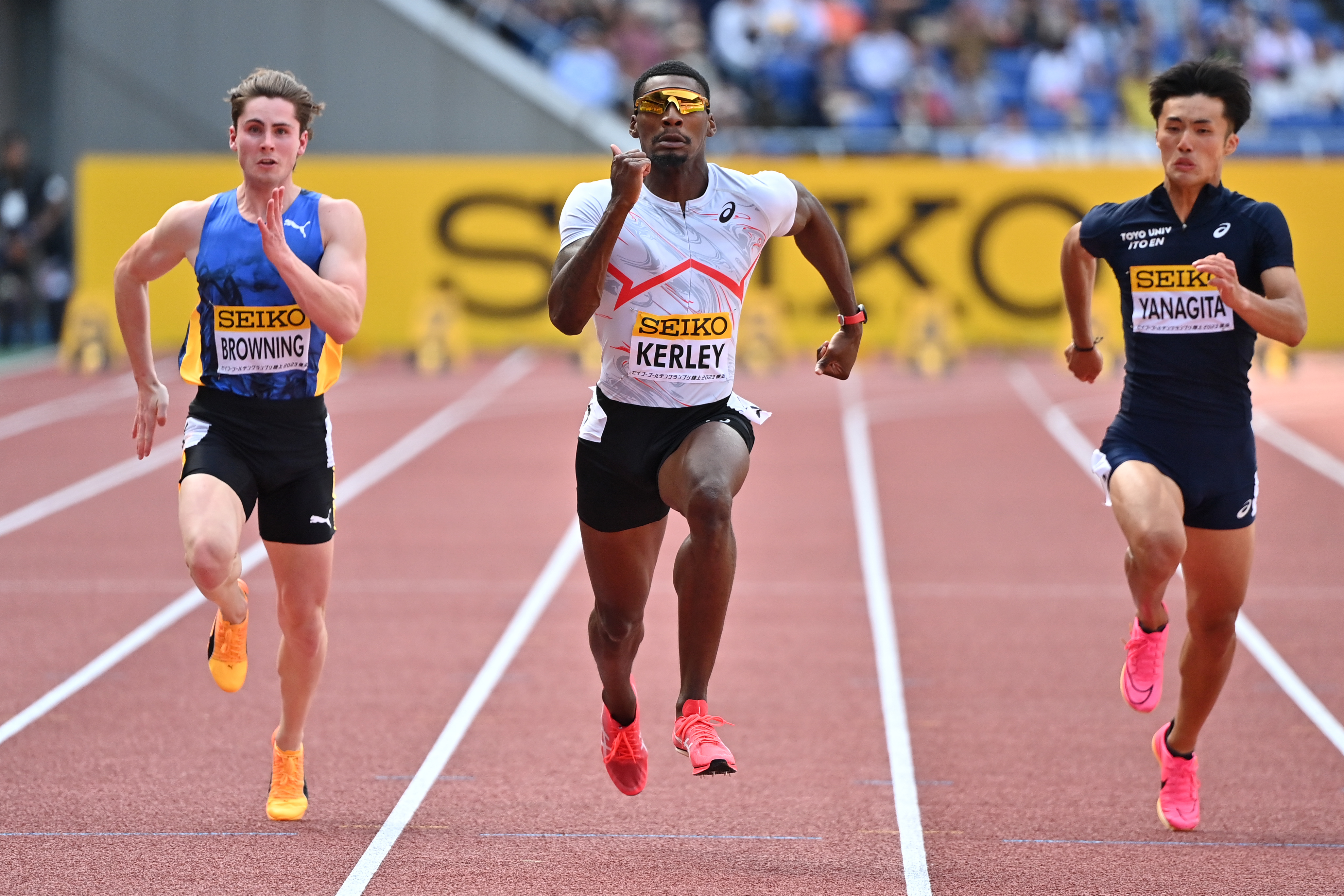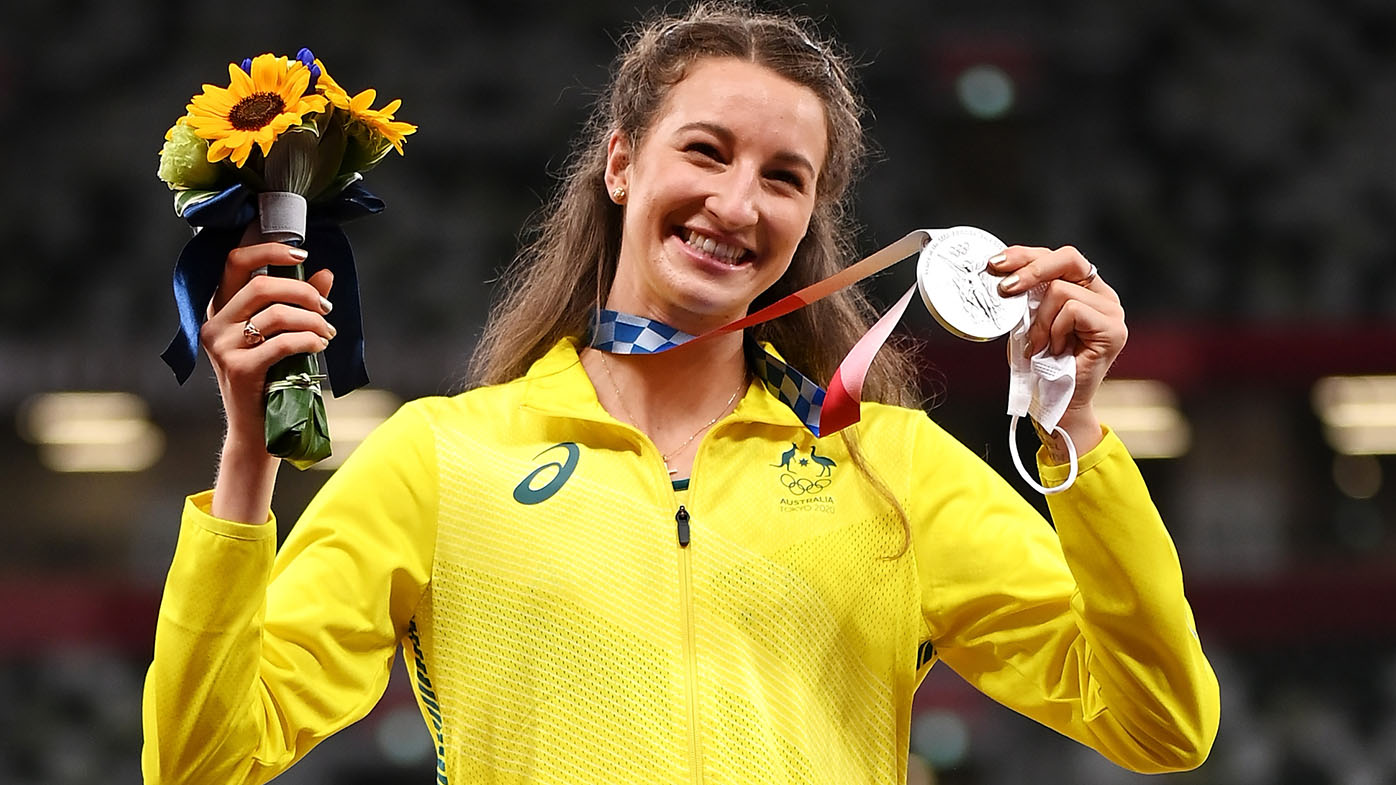
In just 40-odd steps, the world’s top male sprinters motor through the 100-metre dash.
Rohan Browning, the fastest man in Australia, has shed light on a key biomechanic change he’s working on in a bid to overhaul his first step.
The 25-year-old from Sydney is honing in on his first stride as he sets his sights on reaching Olympic and world championship finals, winning medals at major championships and cracking the 10-second barrier, even though it’s a mark the “Flying Mullet” considers a “myth”.
READ MORE: Blues star taken to hospital ‘coughing up blood’
READ MORE: Captain Tedesco axed in Blues shake-up
READ MORE: Legend stunned as De Minaur leaves Aussies stranded
Browning will next test his new-look start at Italy’s Florence Diamond League on Saturday morning (AEST).
“I’ve been rejigging a few different parts of my race, the main one being my start. I’ve changed my start and made it much more efficient. I’ve chopped the length of my first stride and tried to contact the ground a little quicker and am just focusing on accelerating really efficiently,” Browning told Wide World of Sports.
“It’s something I’ve worked on since before the (2021 Tokyo) Olympics, but it’s something that we have made more significant changes to since the (2022 Birmingham) Commonwealth Games.
“It just takes a long time to motor-pattern that and get used to it because your body always reverses to old habits. (It’s about) getting comfortable changing what you’re used to.
“I’ve benefitted a lot from really good biomechanic help through the New South Wales Institute of Sport and Athletics Australia. I’ve been working really closely with Emma Millett, who’s the biomechanist at the NSW Institute of Sport. She’s been such a crucial part of our team.
“We do a lot of video analysis, everything’s pretty high-tech, we use Optojump (an optical measurement system), the Laveg, which is a velocity gun, so everything is really tracked and we make sure to use that data in the most effective way possible.”
The Tokyo Olympics semi-finalist described his revamped start as a “week-to-week thing” and said he was encouraged by his execution at the Australian national championships, held across March and April in Brisbane, when he stormed to gold in 10.02 (0.0 wind).
“I think on the Australian circuit it wasn’t quite clicking, but I knew there was a model that if I could pull it off it would work and would really lift the ceiling of what I’m capable of running,” Browning added.
“I think the national championships was the first sort of glimpse of what that new model is capable of producing. I felt like the national championships was the first time that it sort of clicked and it came together properly.”
Browning will be taking on an incredible field in the Florence Diamond League, which includes the American trio that finished on the podium at the 2022 world championships in Eugene: Fred Kerley, Marvin Bracy-Williams and Trayvon Bromell.
Making up the rest of the field are Jamaican great Yohan Blake, reigning Commonwealth Games champion Ferdinand Omanyala of Kenya, South Africa’s Akani Simbine and Italian Samuele Ceccarelli.


Reigning Olympic gold medallist Marcell Jacobs was set for a mouthwatering duel with Kerley but withdrew this week due to a back injury.
At the Australian national championships, Browning strung together his quickest sequence of 100-metre times at a single meet, clocking 10.18 (+0.4), 10.17 (+0.1) and 10.02 (0.0).
At Yokohama’s Golden Grand Prix on May 21, he posted 10.11 (+1.5) and 10.10 (+0.4). The only man who beat him was Kerley.
The standard is 10.00 for August’s world championships, to be hosted by Budapest, and the 2024 Paris Olympics.
Browning’s legal personal best remains the 10.01 (+0.8) he ran at the Tokyo Olympics, but recent results suggest he’s a great chance of bursting through the 10-second barrier in Europe this year — and maybe even in Florence on Saturday.
For a daily dose of the best of the breaking news and exclusive content from Wide World of Sports, subscribe to our newsletter by clicking here!

